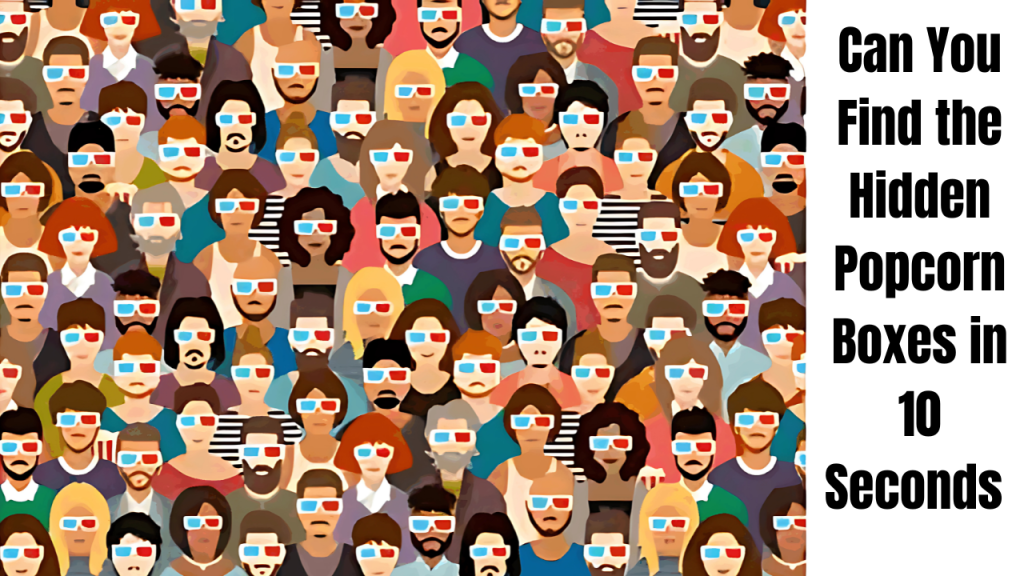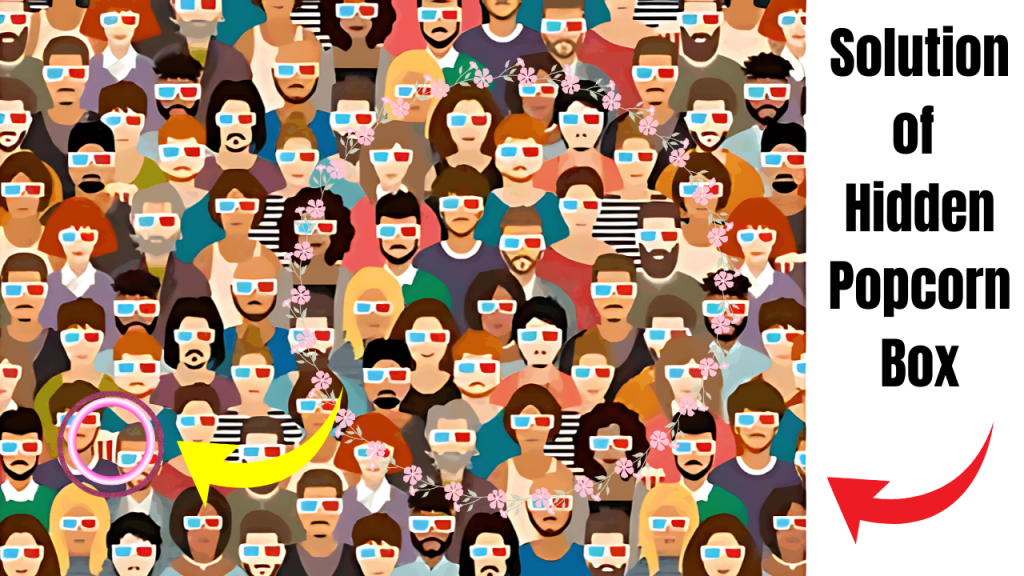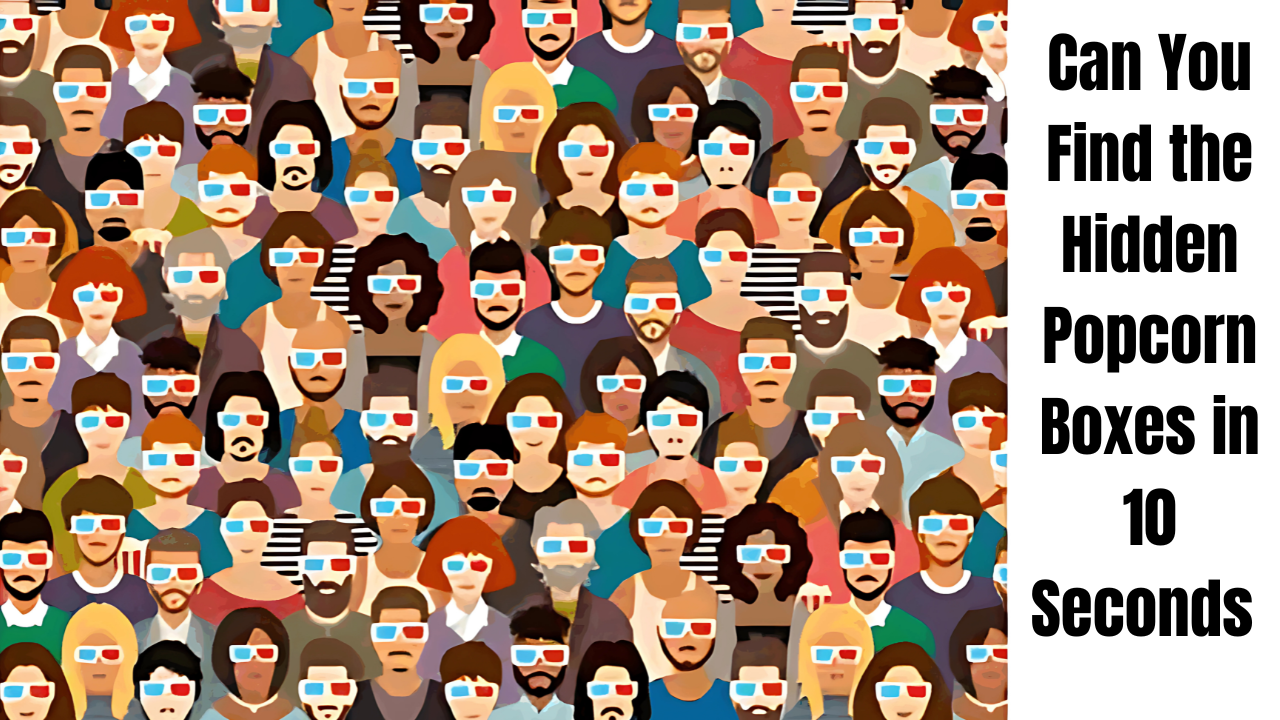Ever sat through a movie and wondered if your eyes were playing tricks on you? That’s exactly what this viral visual puzzle does, but with a delightful twist. This mind-bending challenge has taken social media by storm, leaving countless people squinting at their screens in concentration.
The puzzle seems simple enough at first glance – find five popcorn boxes hidden within a colorful cinema scene. Yet only three out of five participants successfully complete it within the 30-second time limit. Are you up for testing your visual prowess?
Why Visual Challenges Captivate Our Minds
Have you ever wondered why we’re so drawn to these puzzles? The answer lies deep within our brain’s processing mechanisms. These aren’t just entertaining time-killers – they reveal fascinating insights about how we perceive the world around us.
Our brains constantly filter an overwhelming amount of visual information, deciding what deserves our attention and what can be safely ignored. These optical illusions exploit that filtering process, hiding objects in plain sight where our brains might typically overlook them.
Many people breeze through life assuming their visual perception works perfectly. Then along comes a challenge like this that humbly reminds us how easily fooled our sophisticated visual system can be!
The Science Behind the Challenge
The hidden popcorn boxes puzzle works through something scientists call cognitive dissonance. This particular type cleverly uses similar colors, recurring patterns, and strategic placement to create the perfect camouflage for those elusive popcorn containers.
The striped theater seats and colorful 3D glasses worn by the cartoon audience create an ideal background for disguising the popcorn boxes. Your brain must work overtime to distinguish these subtle differences from the intentionally distracting environment.
Experts from ICE36, the creative minds behind this particular brain teaser, designed it specifically to exploit the Gestalt principle of similarity. This psychological concept explains why our brains naturally group similar items together – making it harder to spot the differences that would help identify the hidden objects.

Benefits Beyond Entertainment
Believe it or not, regularly challenging yourself with these visual puzzles offers genuine cognitive benefits. They’re not just fun – they’re actually good for your brain in several measurable ways!
Taking time to solve optical illusions can dramatically improve your attention to detail, a skill that translates to numerous real-world applications. From driving safely to excelling in detail-oriented professions, this enhanced observational ability serves you well.
Pattern recognition improvements also accompany regular practice with these puzzles. Your brain becomes more adept at spotting anomalies and inconsistencies – making you sharper at detecting things that seem slightly “off” in everyday situations.
Sharpening Your Mental Toolkit
The benefits extend into cognitive flexibility as well. Each time you tackle these visual challenges, your brain practices thinking outside conventional patterns, strengthening neural pathways that support creative problem-solving.
Many people report that after regularly practicing with optical illusions, they notice improvements in their everyday visual awareness. They spot things others miss – from finding lost keys to noticing subtle expressions during conversations.
These puzzles provide a genuinely enjoyable mental workout without any physical exertion. It’s like taking your brain to the gym while you’re comfortably scrolling through your phone!
Mastering the Art of Visual Puzzles
Want to improve your success rate with these tricky challenges? Several techniques can dramatically boost your performance when facing optical illusions like the hidden popcorn boxes puzzle.
First, try systematic scanning instead of random eye movements. Start from one corner and methodically move across the image, ensuring you don’t miss any section. This prevents the common mistake of repeatedly checking the same areas while overlooking others.
Another effective strategy involves looking for irregular patterns or breaks in consistency. Our brains are naturally drawn to patterns, so interruptions in those patterns often signal the presence of hidden objects.
Practical Techniques for Success
Try slightly squinting your eyes when tackling challenging optical illusions. This technique reduces detail overload and sometimes helps identify shapes that don’t belong in the overall picture.
Taking in the whole image first before focusing on specific sections helps your brain establish the context. This broader perspective helps identify what “normal” looks like in the scene, making anomalies more apparent when you begin examining details.
Remember to blink occasionally during intense visual searches. This simple action refreshes your visual perception and prevents visual fatigue that can impair your puzzle-solving abilities.
The Cinema Challenge Breakdown
The specific puzzle that’s captured everyone’s attention features a colorful cartoon cinema scene. Moviegoers wearing classic red-blue 3D glasses sit in striped theater chairs, creating the perfect backdrop for hiding those sneaky popcorn containers.
What makes this particular challenge so effective is the strategic placement of the popcorn boxes. They blend masterfully with similar shapes and colors already present in the busy scene, making them devilishly difficult to distinguish at first glance.
The time constraint adds another layer of difficulty. Thirty seconds might seem generous, but when you’re scanning a complex image with numerous distractions, those seconds disappear remarkably quickly!
How Did You Perform?
If you successfully located all five popcorn boxes within the time limit, congratulations! Your visual perception skills are truly remarkable. Your brain has demonstrated excellent pattern recognition abilities and a special talent for quickly identifying visual anomalies.
Don’t be discouraged if you couldn’t find them all. These puzzles are deliberately designed to challenge our visual processing systems. The more optical illusions you solve, the more efficient your brain becomes at breaking through visual noise to find hidden elements.
Remember that approximately 40% of people need more time with this particular challenge. Your brain simply requires additional processing time to overcome its natural tendency to group similar visual elements together.
Why These Puzzles Go Viral
Have you noticed how frequently these visual challenges sweep across social media? Their immense popularity stems from several factors that make them irresistibly shareable.
First, they provide an immediate challenge that anyone can attempt without special knowledge or skills. Unlike many viral content types, these puzzles offer universal accessibility – everyone has eyes and a brain!
The competitive element also drives their popularity. People naturally want to know how their performance compares to others, creating an irresistible urge to share results and challenge friends to beat their time.
Hidden Popcorn Boxes Answer

The Perfect Social Media Storm
These puzzles create the perfect conversation starter. They generate debate, discussion, and friendly competition – all ingredients for highly engaging social media content that platforms algorithmically favor.
The brief time commitment required makes them especially appealing in our attention-limited online environment. Unlike longer-form content, these challenges provide a complete experience in under a minute – perfect for today’s fast-paced digital consumption habits.
Their visual nature makes them ideal for image-centric platforms like Instagram, Pinterest, and Facebook. The colorful, engaging images stand out in crowded feeds, naturally attracting curious scrollers.
Beyond the Popcorn Challenge
Once you’ve conquered the hidden popcorn boxes, countless other optical illusions await to test different aspects of your visual perception. Each type reveals something unique about how our brains process what our eyes see.
Try finding hidden animals in natural scenes – these puzzles test your ability to identify familiar shapes within complex backgrounds. They’re particularly challenging because our brains must distinguish meaningful patterns from visual noise.
Alternatively, spot-the-difference challenges test your comparative visual abilities. These seemingly identical images contain subtle variations that only the most observant viewers quickly identify.
Expanding Your Visual Challenge Repertoire
For a different type of perceptual challenge, try illusions that manipulate your perception of colors and lines. These fascinating puzzles demonstrate how context dramatically affects our perception of identical colors and shapes.
Impossible objects offer yet another fascinating category. These illustrations depict objects that could never exist in three-dimensional space, creating a delightful mental conflict as your brain attempts to reconcile the visual information with physical reality.
Each new type of illusion you master strengthens different aspects of your visual processing abilities, creating a more robust and flexible cognitive toolkit.
Creating Your Own Visual Challenges
Inspired to try creating your own hidden object puzzles? Many enthusiasts find designing these challenges almost as rewarding as solving them!
Start with a busy background that contains repeating patterns or colors similar to your hidden objects. This provides the necessary visual noise for effective camouflage.
Consider the psychological principles at work in effective illusions. Understanding concepts like similarity, proximity, and figure-ground relationships helps create more challenging and satisfying puzzles.
Tools for Aspiring Puzzle Creators
Digital art software provides the perfect platform for creating these visual challenges. Programs like Photoshop allow precise control over elements, making it easier to hide objects convincingly within complex scenes.
When designing your first puzzles, start with fewer hidden objects and gradual difficulty progression. This allows you to refine your techniques before attempting more complex challenges.
Don’t forget to test your creations on willing friends before sharing them widely. Their feedback helps identify whether your puzzle hits that sweet spot between challenging and impossibly frustrating!
FAQs About Visual Perception Puzzles
Do some people naturally have better visual perception?
Yes, natural variation exists in visual processing abilities, but everyone can improve with practice.
Can children benefit from these optical illusions?
Absolutely! These puzzles help develop crucial cognitive skills while being thoroughly enjoyable.
Why do I sometimes see hidden objects immediately while my friends struggle?
Individual differences in visual processing, attention patterns, and prior experience all influence performance.
Can optical illusions have practical applications beyond entertainment?
Definitely! They’re used in art, design, psychology research, and even driver safety training.
How often should I practice these puzzles for maximum benefit?
Even just a few minutes daily can yield noticeable improvements in visual processing skills.
So, did you spot all five popcorn boxes within the time limit? Whether you succeeded or need more practice, these fascinating visual challenges offer both entertainment and genuine cognitive benefits. Why not challenge a friend to beat your time?
